
Discover the Enchanting Castello di Brolio
Experience the rich heritage and exquisite wines of Tuscany at Castello di Brolio, a stunning medieval castle in the Chianti region.
Nestled in the picturesque Chianti region of Italy, Castello di Brolio is a historical castle that offers breathtaking views, rich history, and exquisite wines. Explore the castle's stunning architecture and lush vineyards, making it a must-visit for any traveler seeking a taste of Tuscany's heritage.
A brief summary to Castello di Brolio
- Località Madonna a Brolio, Gaiole in Chianti, Province of Siena, 53013, IT
- +390577730280
- Visit website
Local tips
- Visit during the early morning or late afternoon for fewer crowds and stunning light for photography.
- Don't miss the guided wine tasting sessions; they offer a deep dive into the Ricasoli family's wine-making traditions.
- Check for any seasonal events or festivals that might be happening during your visit for an enhanced experience.
- Wear comfortable shoes as the castle grounds and gardens can require a bit of walking.
- Consider purchasing a bottle of their wine as a souvenir to remember your visit.
Getting There
-
Car
If you are driving, head towards Gaiole in Chianti. From the center of Gaiole, take the SP71 road towards Brolio. Follow the signs for Castello di Brolio. The castle is located at Località Madonna a Brolio, approximately 5 km from Gaiole. There is parking available at the castle.
-
Public Transportation
To reach Castello di Brolio via public transport, take a bus from Siena to Gaiole in Chianti. The journey takes about 1 hour. Once you arrive in Gaiole, you will need to either walk or take a taxi to the castle. The distance from the bus stop in Gaiole to the castle is approximately 5 km, and walking may take around 1 hour. Alternatively, you can pre-book a taxi from the bus station to Castello di Brolio for convenience.
Discover more about Castello di Brolio
Iconic landmarks you can’t miss
Castellare in Chianti
3.7 km
Discover the serene beauty of Castellare in Chianti, your perfect Tuscan retreat surrounded by vineyards and rolling hills.

San Gusmè
4.2 km
Experience the enchanting medieval village of San Gusmè, a hidden gem in Tuscany, rich in history, stunning landscapes, and authentic Italian culture.

Official Tourist Guide of Florence and Siena Michele Busillo
7.6 km
Experience the wonder of Florence and Siena with expert-guided tours by Michele Busillo, exploring art, history, and local culture.
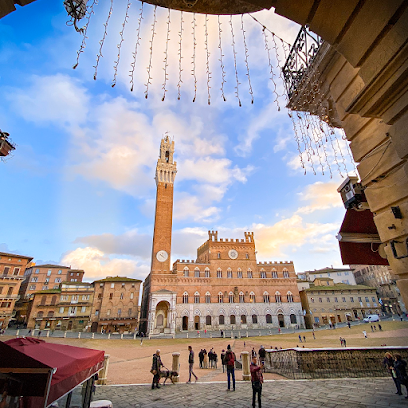
Dievole Wine Resort
8.3 km
Discover the enchanting Dievole Wine Resort in Tuscany, where luxurious accommodations meet exquisite wine tastings and authentic Italian cuisine amidst stunning landscapes.

Badia a Coltibuono
9.1 km
Experience the essence of Tuscany at Badia a Coltibuono, where culinary excellence meets the beauty of the Chianti countryside.

Tenuta Di Coltibuono Srl
9.1 km
Experience the heart of Tuscany at Tenuta Di Coltibuono, where exquisite wines and authentic local cuisine await amidst stunning landscapes.

Chianti Live
10.9 km
Explore the stunning Chianti region with Chianti Live, your go-to agency for tours, rentals, and unforgettable Italian experiences.

Azienda Agricola Caparsa Di Cianferoni Paolo
12.1 km
Experience the charm of Tuscany at Azienda Agricola Caparsa, where authentic Chianti wines and local produce come together amidst breathtaking landscapes.

Castello di Volpaia
13.3 km
Experience the charm of Tuscany at Castello di Volpaia, where exquisite wines meet breathtaking landscapes in a historic setting.

Basilica dell'Osservanza
13.4 km
Experience the serene beauty and rich history of Basilica dell'Osservanza, a stunning architectural gem in Siena, perfect for peaceful reflection and exploration.
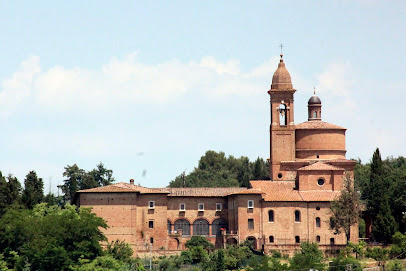
Province of Siena
13.5 km
Explore the captivating Province of Siena, where medieval charm meets stunning landscapes and rich Tuscan culture, perfect for every traveler.

Istine
14.0 km
Experience the elegance of Tuscany at Istine Winery, where exquisite wines and breathtaking landscapes create a memorable escape in Chianti.
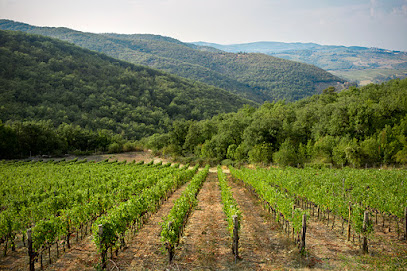
Wine Tour in Tuscany
14.3 km
Explore Tuscany's premier winery, where breathtaking landscapes meet exquisite wines and culinary delights in an unforgettable experience.

Porta Ovile
14.5 km
Discover Porta Ovile, a historic gateway in Siena, showcasing stunning architecture and rich cultural heritage amidst the beauty of Tuscany.

Basilica of San Francesco
14.6 km
Explore the Basilica of San Francesco in Siena, a stunning Gothic church rich in history, art, and spiritual significance in the heart of Tuscany.

Unmissable attractions to see
Barone Ricasoli
0.5 km
Experience the essence of Tuscany at Barone Ricasoli, a premier wine bar in La Madonna, offering exquisite local wines and breathtaking views.

Castello di Cacchiano
3.0 km
Discover the historical charm and agricultural beauty of Castello di Cacchiano, a hidden gem in the heart of Chianti, Italy.

Cantalici Winery - L'Antica Fornace Di Ridolfo
3.2 km
Explore Cantalici Winery in Chianti for an authentic taste of Tuscany's finest wines and breathtaking vineyard views.

Villa a Sesta
3.7 km
Discover the essence of Tuscan winemaking at Villa a Sesta, where stunning landscapes meet exquisite wines in a serene setting.

Meleto Castle
5.1 km
Discover the charm of Meleto Castle in Chianti, a medieval gem offering stunning views, rich history, and exquisite Tuscan wines.
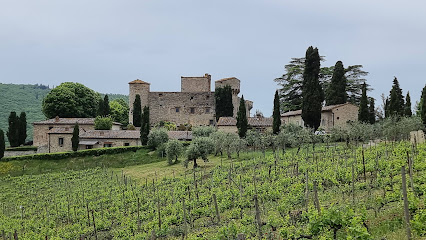
Castello di Ama
6.7 km
Discover the beauty of Tuscany at Castello di Ama, where exquisite wines meet contemporary art in the heart of Chianti.
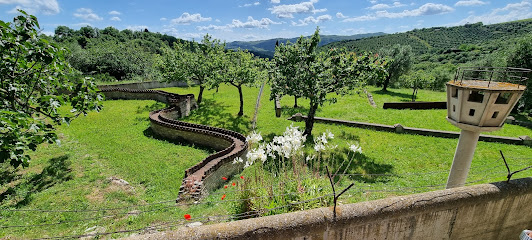
Azienda Agricola Vallepicciola
6.7 km
Discover the beauty of Tuscany at Azienda Agricola Vallepicciola, where exceptional wines and breathtaking landscapes come together in a delightful experience.

Tolaini Winery
6.8 km
Experience the magic of Tuscany at Tolaini Winery, where exceptional wines and stunning landscapes await every visitor.

Parco Sculture del Chianti
7.0 km
Experience the harmonious blend of contemporary art and nature at Parco Sculture del Chianti, nestled in the heart of Tuscany's stunning landscapes.

Fèlsina S.P.A.
7.7 km
Experience the essence of Tuscany at Fèlsina S.P.A., where exquisite wines and breathtaking landscapes meet in perfect harmony.

Tenuta Perano - Frescobaldi
7.9 km
Explore the elegance of Tuscan winemaking at Tenuta Perano - Frescobaldi, where tradition and flavor meet in breathtaking landscapes.

Castello di San Donato in Perano
8.6 km
Discover the enchanting Castello di San Donato in Perano, a medieval gem in the heart of Tuscany offering stunning views and rich history.

Villa di Geggiano, Castelnuovo Berardenga
9.0 km
Discover the charm of Villa di Geggiano, a Tuscan winery and art museum offering exquisite wines and breathtaking views in a historic setting.

Borgo scopeto winery
9.1 km
Experience the exquisite wines and breathtaking landscapes at Borgo Scopeto Winery in the heart of Tuscany.

Abbazia di San Lorenzo a Coltibuono
9.1 km
Discover the historical and spiritual essence of Abbazia di San Lorenzo a Coltibuono in the heart of Tuscany's enchanting Chianti region.

Essential places to dine
Osteria di Brolio
0.4 km
Discover Osteria di Brolio: Where Authentic Tuscan Cuisine Meets Stunning Chianti Views for an Unforgettable Dining Experience.

La Bottega del 30
3.4 km
Discover the exquisite flavors of Tuscany at La Bottega del 30, where fine dining meets authentic Italian cuisine.

Il Celliere a Castagnoli
3.5 km
Experience authentic Italian cuisine and exquisite local wines at Il Celliere a Castagnoli amidst stunning Tuscan landscapes.

Ristorante Malborghetto dal 1999 in Lecchi in Chianti
5.6 km
Experience authentic Tuscan cuisine at Ristorante Malborghetto dal 1999, where every dish tells a story amidst stunning Chianti landscapes.

La Loggia Del Chianti
10.8 km
Experience authentic Tuscan cuisine with stunning views at La Loggia Del Chianti - a culinary haven in the heart of Tuscany.

PARTICOLARE di Siena
14.4 km
Discover authentic Tuscan flavors at PARTICOLARE di Siena – a culinary gem in the heart of Tuscany offering exquisite Italian dishes.

Oro Di Siena
14.5 km
Discover authentic Italian cuisine at Oro Di Siena - where tradition meets modern culinary excellence in the heart of Tuscany.

Tre Cristi Enoteca Ristorante
14.7 km
Discover Tre Cristi Enoteca Ristorante: A premier destination for seafood lovers in Siena offering exquisite Italian cuisine and fine wines.

Osteria Le Sorelline
14.7 km
Experience authentic Tuscan flavors at Osteria Le Sorelline in Siena – where tradition meets taste.

Osteria il Vinaio
14.7 km
Discover authentic Italian flavors at Osteria il Vinaio in Siena – where tradition meets taste in every dish.

Salefino Wine and Cuisine
14.8 km
Experience authentic Mediterranean flavors at Salefino Wine and Cuisine in Siena – where every dish tells a story.

Ristorante Campo Cedro
14.8 km
Experience the finest Italian seafood at Ristorante Campo Cedro in Siena – where tradition meets innovation in every dish.

Osteria La Sosta di Violante
14.8 km
Discover authentic Tuscan flavors at Osteria La Sosta di Violante in Siena, where traditional recipes meet local ingredients for an unforgettable dining experience.

Osteria Babazuf Siena
14.8 km
Discover the heart of Tuscan cuisine at Osteria Babazuf in Siena—where every dish tells a story.
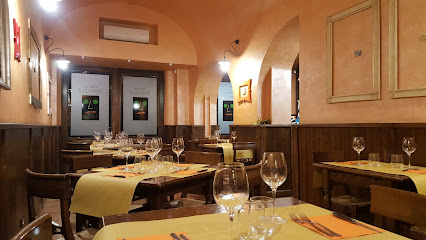
Ristorante Taverna Di Cecco
14.9 km
Experience authentic Tuscan flavors at Ristorante Taverna Di Cecco in Siena – where tradition meets exquisite dining.

Markets, malls and hidden boutiques
Bacci Wines
4.8 km
Experience the rich heritage of winemaking at Bacci Wines, nestled in the scenic landscapes of Tuscany, Italy, perfect for wine lovers and tourists alike.

Tenuta Terrabianca, Arillo in Terrabianca
9.3 km
Experience the essence of Tuscany at Tenuta Terrabianca - a premier winery and olive oil producer in the scenic Province of Siena.

La Ceramica di Angela Pianigiani
10.3 km
Explore the exquisite handmade ceramics of La Ceramica di Angela Pianigiani in Radda in Chianti, a treasure trove of Tuscan artistry.

Azienda Agricola Il Barlettaio
10.7 km
Discover the exquisite wines and breathtaking views at Azienda Agricola Il Barlettaio, a premier winery in the heart of Tuscany's Chianti region.

Vignavecchia
10.7 km
Discover the essence of Tuscany at Vignavecchia, a charming winery nestled in the heart of Chianti, offering exquisite wines and breathtaking views.

Casa Porciatti dal 1965
10.8 km
Experience Tuscany’s rich culinary heritage at Casa Porciatti in Radda in Chianti – where quality meets tradition in every bite.

Chianti Km0
10.9 km
Explore the rich culinary heritage of Tuscany at Chianti Km0, your gateway to local wines, oils, and artisanal delights.

Chianti Cashmere
11.0 km
Experience the beauty of sustainable farming at Chianti Cashmere, an organic farm in the heart of Chianti, Italy.

Cantina Castelvecchi in Chianti
13.5 km
Experience the authentic taste of Tuscany at Cantina Castelvecchi, a charming winery in the heart of Chianti with exquisite wines and scenic views.

L' Atelier
14.4 km
Explore the charm of vintage finds and exquisite antiques at L' Atelier, Siena's hidden gem for thrift store lovers.

Galleria PortaSiena
14.6 km
Discover the vibrant shopping experience at Galleria PortaSiena, where modern retail meets the charm of traditional Siena.

Centopercento Camicie Siena by Daniela Caruso
14.7 km
Discover exquisite custom tailoring and fashion accessories at Centopercento Camicie in the heart of Siena, where quality meets elegance.
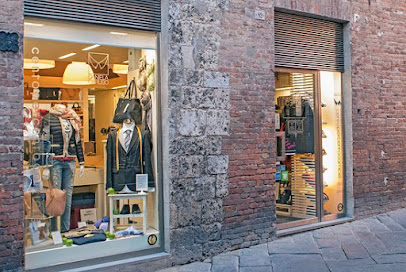
Casa della Pelle
14.7 km
Explore the artistry of handmade leather goods at Casa della Pelle, Siena's premier destination for exquisite bags and accessories.

Franceschini Boutique
14.8 km
Explore Franceschini Boutique in Siena for a curated selection of stylish clothing and accessories that reflect the essence of Italian fashion.

Dolci Trame
14.8 km
Discover the sweet delights of Dolci Trame in Siena—artisan chocolates, pastries, and a taste of local tradition await you.

Essential bars & hidden hideouts
Agribar Brolio
0.5 km
Experience the flavors of Tuscany at Agribar Brolio, a charming bar in the heart of Chianti, known for its local wines and warm hospitality.

Chianti Brew Fighters
10.3 km
Experience the finest craft beers at Chianti Brew Fighters, where traditional brewing meets Tuscan charm in the heart of Italy.

Bar Dante Alighieri
10.9 km
Discover the charm and flavors of Tuscany at Bar Dante Alighieri, a delightful bar and restaurant in Radda in Chianti.

i parolai tapas bar
14.4 km
Discover the vibrant culinary scene of Siena at i Parolai, where delicious tapas and a welcoming atmosphere await you.

Funky Bar Tabacchi
14.5 km
Experience the vibrant atmosphere and authentic Italian culture at Funky Bar Tabacchi in Siena, the perfect spot for relaxation and enjoyment.

Skilė MUSIC PUB
14.6 km
Discover Siena's nightlife at Skilė MUSIC PUB, where delicious sandwiches meet great music in a vibrant pub atmosphere.

Bar Impero Siena
14.7 km
Discover the heart of Siena at Bar Impero, where Italian café tradition meets modern charm in a delightful atmosphere.

bella vista social pub
14.8 km
Bella Vista Social Pub: Relax with a drink and breathtaking views in the heart of Siena, where local charm meets vibrant atmosphere.

Caffè Le Logge
14.8 km
Explore the vibrant cocktail scene in Siena at Caffè Le Logge, where exquisite drinks and a cozy atmosphere await.

Antico Bar La Lizza
14.9 km
Discover the charm of Antico Bar La Lizza in Siena, where authentic Italian coffee and pastries meet vibrant local culture.

Charlie Mixology Bar di Aldinucci Riccardo
14.9 km
Discover the vibrant mixology scene at Charlie Mixology Bar, where exquisite cocktails blend with a chic atmosphere in the heart of Siena.

Bar Siena
14.9 km
Experience authentic Italian culture at Bar Siena, where delightful drinks and local charm meet in the heart of Siena.

Trefilari Wine Bar
14.9 km
Experience the heart of Tuscany at Trefilari Wine Bar, where exquisite wines and authentic Tuscan cuisine create unforgettable moments.

Non Solo Bar siena
14.9 km
Discover the flavors of Siena at Non Solo Bar, a delightful bistro offering pizzas, sandwiches, and more in a cozy setting.

Key Largo Bar
14.9 km
Experience the vibrant atmosphere and local flavors at Key Largo Bar in Siena, a perfect spot for relaxation and socializing.




